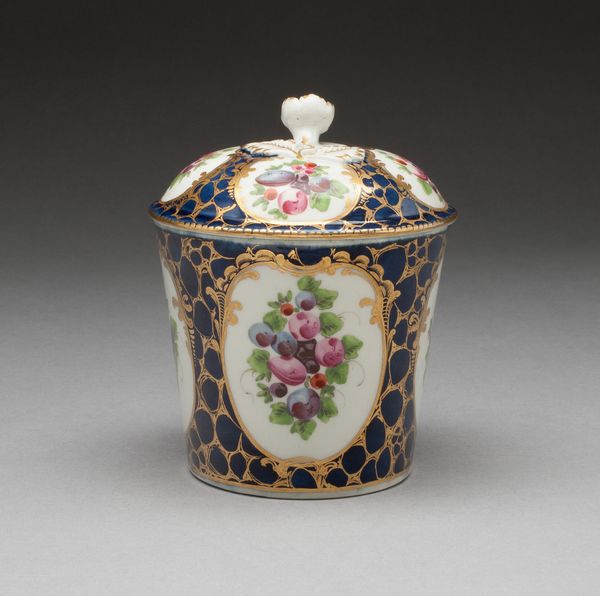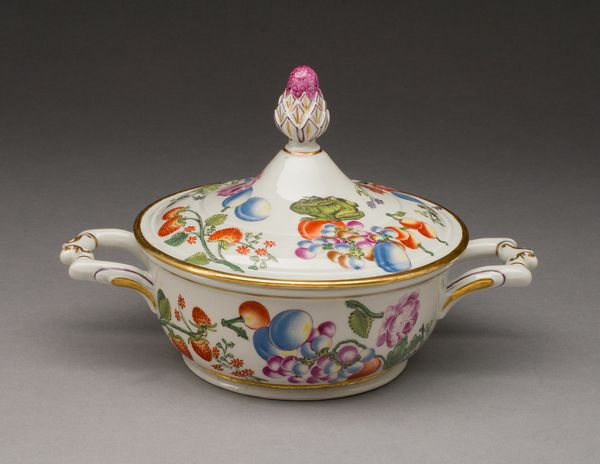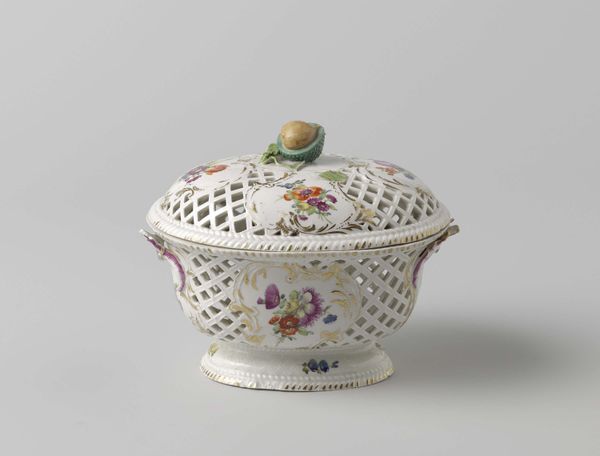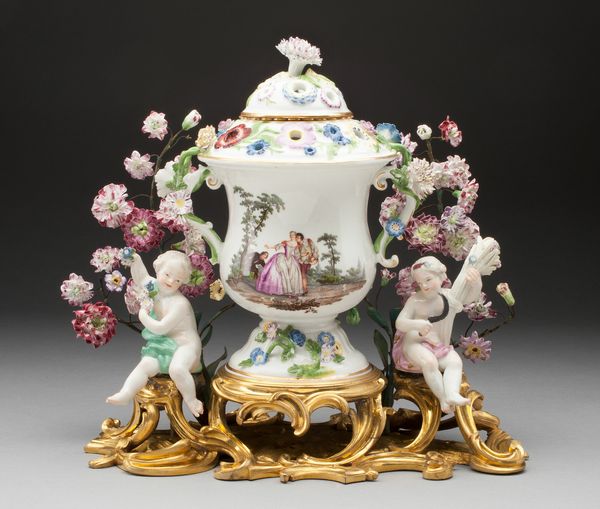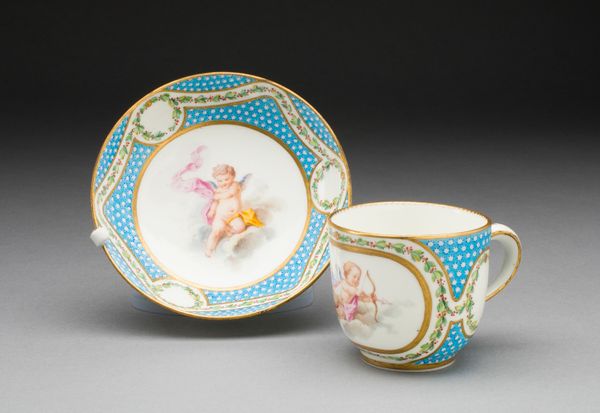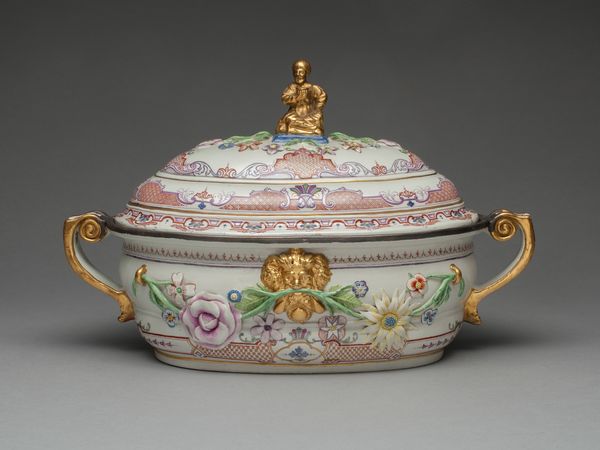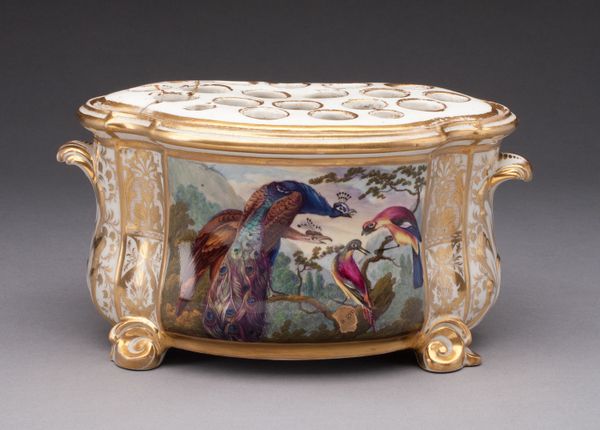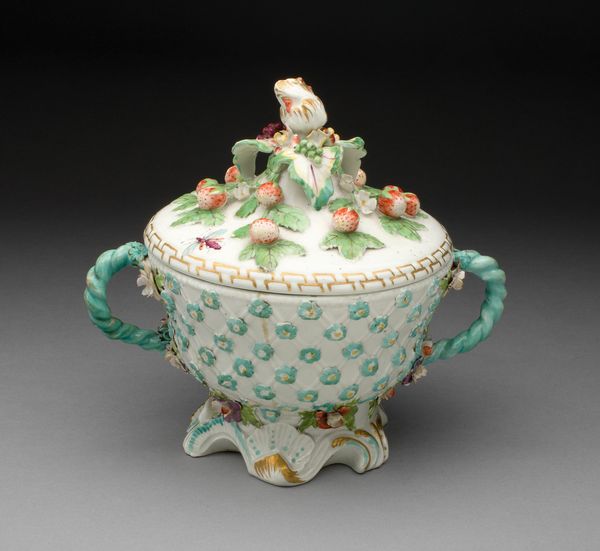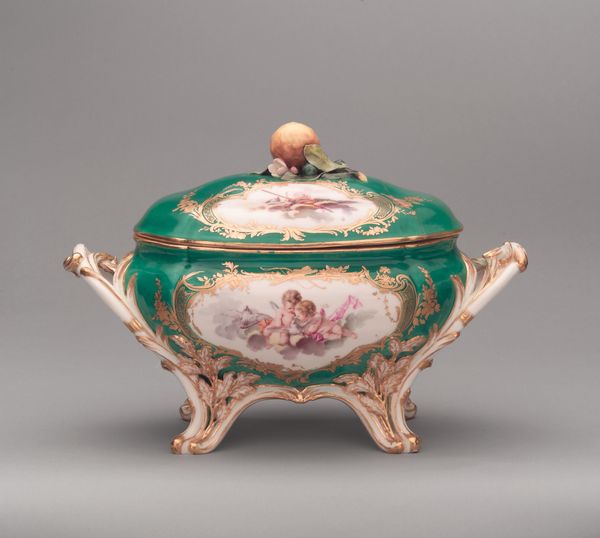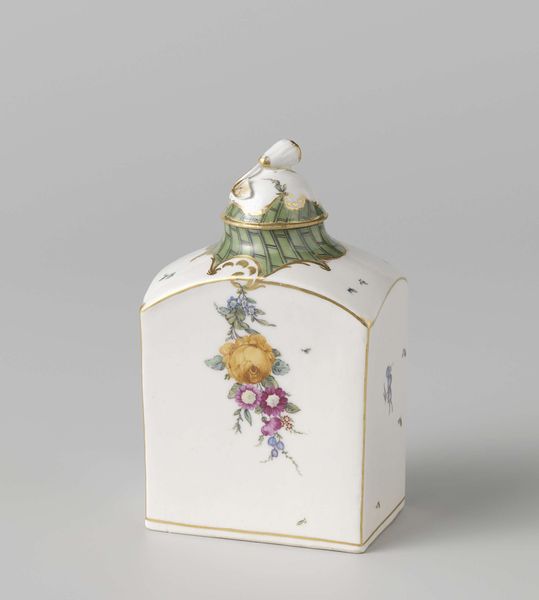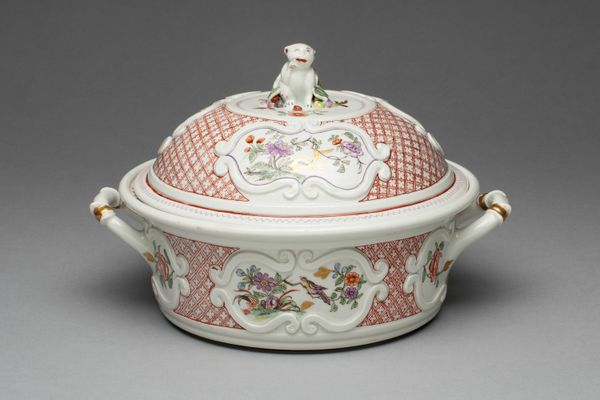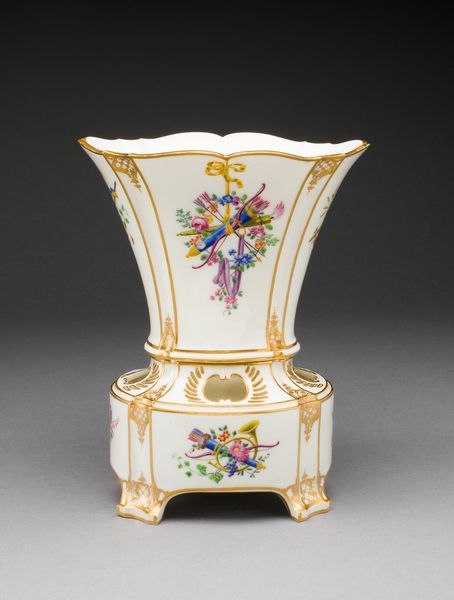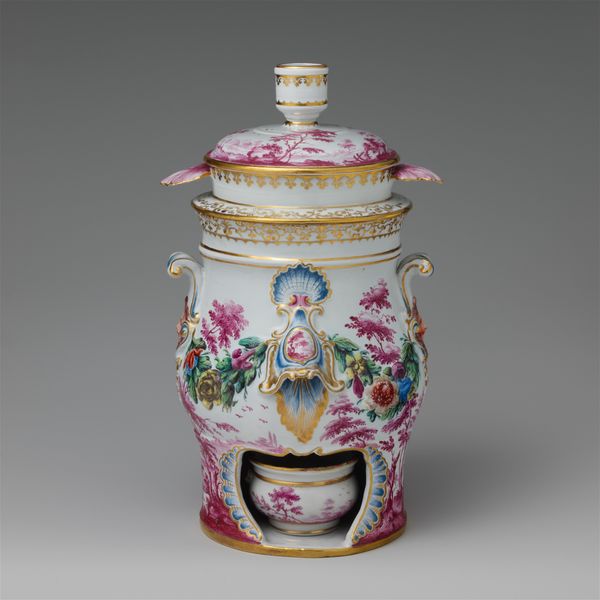
ceramic, porcelain
#
ceramic
#
porcelain
#
decorative-art
#
rococo
Dimensions: 10.2 × 9.2 cm (4 × 3 5/8 in.)
Copyright: Public Domain
Editor: This delightful porcelain sugar bowl is from a tea service created by the Manufacture nationale de Sèvres around 1770. I’m struck by how ornate it is, a real feast for the eyes with that cherubic scene! How would you interpret the imagery here? Curator: Ah, yes. Sèvres porcelain. Notice how the dominant blue color, “bleu céleste,” speaks to a longing for the heavens, and evokes a sense of preciousness that was central to the Rococo era. How do you think that plays with the Cupid figure? Editor: Well, he seems like he’s plucked straight out of a mythological painting…very playful. Is there a reason why Cupid is holding flowers, though? Curator: Cupid and the presence of flower motifs tap into the period's complex engagement with nature and sensuality. Those wouldn't be the *only* references in Rococo, of course. This imagery links romantic love to ideas of paradise, as nature itself signifies rebirth and cyclical patterns. These repeated representations allowed for art to act as mnemonic triggers within the rituals of courtly life. Editor: So, by having these images on everyday items, people are reminded of something bigger…like love? Curator: Indeed! They carry collective associations. Sugar, for instance, was also a precious commodity and connects to trade and exoticism. The cup itself becomes an active participant in performing cultural memory. What do you make of the fact it’s part of a tea service? Editor: That brings in even more social context, doesn’t it? All these images playing out during a social ritual... Fascinating! I will think about tableware in a completely different way now. Curator: Wonderful. And to remember these connections across history is, in my opinion, to truly understand its cultural influence.
Comments
No comments
Be the first to comment and join the conversation on the ultimate creative platform.
